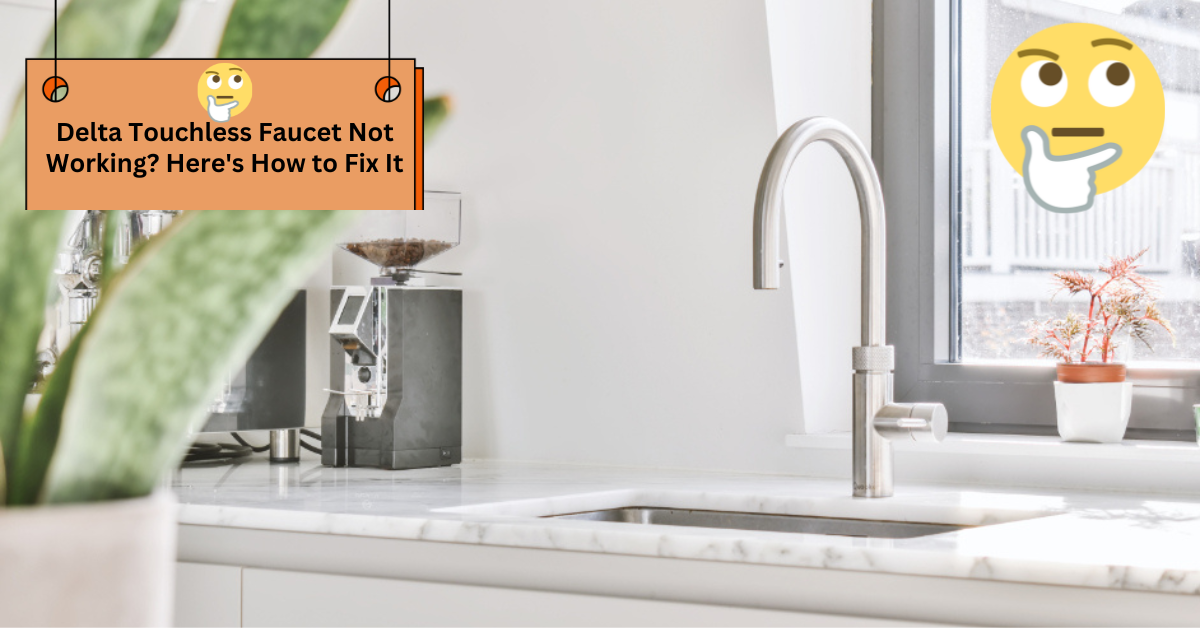If your Delta kitchen faucet sprayer thumb control has detached, you’re not alone. A detached sprayer hose is a common issue that can disrupt your kitchen routine. Luckily, you don’t need professional plumbing skills to fix it.
This guide shows you how to reattach your Delta sprayer hose. Follow these steps for a leak-free and fully working faucet.
On this page:
ToggleWhy Does a Delta Kitchen Faucet Sprayer Thumb Control Detach?
Before starting repairs, it’s key to know why detachment happens:
- Hose Retraction Issues – The hose might have slipped back into the faucet base.
- Loose or Broken Connector – Over time, the connection point may weaken.
- Mineral Buildup – Hard water can cause debris to clog the connections.
- Wear and Tear – With frequent use, parts can degrade.
Step-by-Step Guide to Reattach Your Delta Kitchen Faucet Sprayer Thumb Control

Step 1: Gather the Required Tools
Before starting, ensure you have got the necessary tools:
- Adjustable wrench
- Plumber’s tape (for securing connections)
- Needle-nose pliers
- Replacement O-rings (if necessary)
- Bucket or towel (to catch excess water)
Step 2: Turn Off the Water Supply
- Locate the shut-off valves under your sink.
- Turn them clockwise to shut off the water.
- Test the faucet to confirm that the water is off.
Step 3: Access the Sprayer Hose
- If your sprayer hose has retracted inside, go under the sink and manually pull it back out.
- Look for any weights attached to the hose and reposition them properly.
Step 4: Reconnect the Sprayer Head to the Hose
- If the sprayer head detaches, align it with the hose connector.
- Most Delta faucet sprayers use a quick-connect system:
- Push the hose into the sprayer head until it clicks.
- Pull gently to ensure it is locked.
- If it doesn’t stay, check for a missing clip or a worn-out O-ring.
Step 5: Check for Leaks and Secure the Connection
- Turn the water back on slowly.
- Test the sprayer by pressing the thumb control.
- If leaks appear, wrap the threaded parts with plumber’s tape.
- Tighten connections with a wrench if necessary.
Step 6: Test the Thumb Control Functionality
- Ensure the sprayer thumb control works by toggling between spray and stream modes.
- If it’s unresponsive, inspect the valve inside the handle for clogs.
- Soak the sprayer head in vinegar if there is mineral build-up.
Step 7: Replace Any Damaged Parts
If your sprayer still isn’t functioning, consider replacing it:
- O-rings (for better sealing)
- Quick-connect clip (if it’s missing or damaged)
- Sprayer head (if clogged beyond repair)
Frequently Asked Questions
How do I stop the sprayer hose from retracting inside the faucet?
Attach a hose weight at the correct position under the sink to keep the hose from retracting too far.
What if my Delta sprayer leaks after reattachment?
Check for worn-out O-rings, apply plumber’s tape, and tighten the connections securely.
Can I replace the thumb control separately?
Yes, but make sure to get a Delta sprayer thumb control model that fits your faucet.
How do I clean a clogged sprayer head?
Detach it and soak it in a solution of white vinegar and water for at least 30 minutes.
Final Thoughts
Reattaching a Delta kitchen faucet sprayer thumb control is a manageable DIY task with the right tools and approach. By following this guide, you can save money on repairs and restore your faucet’s functionality in no time.
If you need replacement parts, visit Delta’s official website or a plumbing supply store. This will help you find parts that fit your faucet model. Happy fixing!








